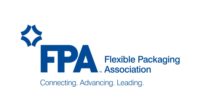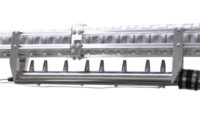Static is a common phenomenon that affects a number of industries, including plastics and converting, and as machinery speeds have increased and an expanding number of synthetic materials have been developed, the negative effects that static can have on these sectors have become more apparent.
Static electricity causes productivity, quality and safety problems throughout industry: in the form of electrostatic attraction or repulsion, it generates dust contamination and product misbehaviour; as an electrostatic discharge, it gives shocks to operators, starts fires and destroys electronic components.
Many factors affect the generation and maintenance of static, including humidity, the type of material, repetition and change in temperature. Plastic films, in particular, generally maintain static charges for a long time due to their high resistivity, so it is common for problems with static to occur in this industry. Whenever the raw structure of a plastic material is changed, the process will manifest an electrostatic charge, which invariably leads to static problems on the production floor.
Filling a Need
As health and safety legislation has tightened, and consumer expectations and the increasing need for efficiency and cost-savings on the production floor have grown, a need has emerged to resolve these static problems. And to meet this demand, innovative solutions have been developed, often tailored to meet specific requirements.
What happens when static occurs in the flexible packaging industry?
As static is generated, process lines begin to mis-feed as products made of synthetic material such as polyethylene, polypropylene and polystyrene misbehave, and the opportunity for contamination of the final product increases dramatically. Add to this the increased potential for serious damage and injury to operators as a consequence of electric sparks generated within explosive environments, and the need to control static levels becomes a fundamental aspect of the production environment. Contamination can ruin the print quality of finished product and cause rejects in the food, pharmaceutical, and medical industries where quality is of utmost importance.
Over time, the applications and benefits for static elimination and generation have become increasingly diverse. Below are a couple of specific examples of how static elimination or generation technology can now be applied.
Consider the label printing industry: a common need for static elimination is found on digital printing lines. For instance, a massive static charge can be generated as the coated paper or film is unwound from a roll. These charges are capable of attracting airborne dust to the web from several feet away, which can be particularly damaging if the material comes within close proximity of the floor. Once the dust is on the material, it can cause defects in print quality.
Another issue to take into account is that high static charges can also cause problems with ink adhesion, as they can actually repel the ink from the material surface, and affect the overall quality of the product. Not only does this scenario lead to increased production costs, it can also lead to reduced production speeds.
When static is present on the web, even in small amounts, this can still cause issues during the winding process. As the material is wound up, the “battery effect” can result in a huge charge being accumulated. Aside from causing high levels of dust attraction, a particularly fatal discharge can result not only in operator shocks, but also fires or the severe damage of in house equipment.
The Benefits of Static
On the other hand, introducing static into a production line can be beneficial: consider synchronising static generation technology with a die cutter on a plastic bag line, a tiny application of static can be applied to the edges of a punched hole. By pinning the area surrounding the handle closed, the static charge effectively prevents the bags from inflating. Further along the line, static is applied to fix the bags tightly to each other as they are wound into rolls. As a result, the overall size of each roll can be reduced by as much as 30 percent, permitting huge savings in subsequent transport costs.
Despite the invisible nature of static, without the equipment developed to control it, the manufacturing industry couldn’t maintain its health & safety standards and the levels of productivity and profitability that it currently does. In the future, we can expect process line speeds to increase further and become more automated, and the range of materials to expand further. As they do, it will be up to experts in this field to be on hand to offer unique solutions and provide the necessary services to ensure that standards continue to be met with ease.
Meech International
About the Author
Matt Fyffe is VP/general manager of Meech Static Eliminators USA Inc. Founded in 1907 and headquartered in Oxfordshire, UK, Meech International is a specialist developer and manufacturer of electrostatic controls and related solutions.



